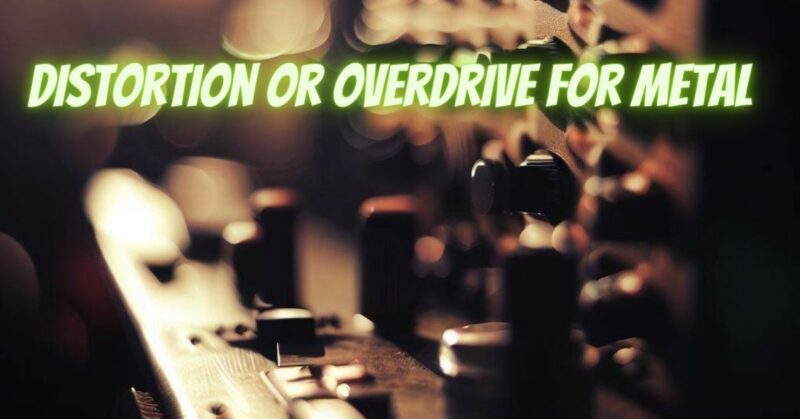Metal music demands powerful and aggressive tones, making the choice between distortion and overdrive pedals crucial for guitarists seeking the right sound. In this article, we will explore the characteristics of distortion and overdrive pedals and discuss their suitability for achieving the heavy tones required in metal music.
Distortion Pedals for Metal: Distortion pedals are commonly associated with heavy genres like metal. They provide intense saturation, high-gain tones, and aggressive sonic characteristics. Distortion pedals excel at producing heavily distorted and heavily saturated tones that are ideal for palm-muted chugs, fast riffing, and blistering solos. They often offer multiple gain stages and tone-shaping controls to help you dial in the desired level of aggression and articulation.
Benefits of Distortion Pedals for Metal:
- Intense and Saturated Tones: Distortion pedals are specifically designed to deliver high-gain, heavy distortion, making them well-suited for achieving the intense tones needed in metal.
- Articulation and Definition: Distortion pedals can provide excellent note separation and clarity, allowing fast riffs and intricate passages to cut through the mix.
- Versatility: Many distortion pedals offer a wide range of tonal options, allowing you to adjust the level of gain, tone, and contour to suit different subgenres within metal.
Overdrive Pedals for Metal: While overdrive pedals are not typically associated with metal, they can still find a place in the genre. Overdrive pedals produce a smooth, natural-sounding breakup similar to the tone achieved by pushing a tube amplifier. While they may not deliver as much gain as distortion pedals, they can add an extra layer of harmonics and sustain to your tone, making them suitable for certain subgenres of metal, such as classic metal or hard rock.
Benefits of Overdrive Pedals for Metal:
- Sustain and Harmonics: Overdrive pedals can enhance sustain and add harmonic richness to your tone, giving your metal playing more depth and character.
- Dynamic Response: Overdrive pedals respond to your picking dynamics, allowing you to control the amount of saturation by adjusting your playing technique.
- Tonally Versatile: Overdrive pedals can provide a wide range of tones, from a subtle push to moderate saturation, allowing you to experiment and find the right balance for your style.
Choosing the Right Pedal: Selecting the ideal pedal for metal depends on your personal preferences, playing style, and desired tone. For the majority of metal players, a distortion pedal will provide the necessary level of gain and aggression. However, if you prefer a slightly different tonal flavor or want to experiment with classic metal or hard rock tones, incorporating an overdrive pedal into your setup can be a viable option.
Conclusion:
While distortion pedals are the go-to choice for achieving heavy tones in metal, overdrive pedals can still play a role in certain subgenres or as a means of adding depth and sustain to your tone. Experiment with both types of pedals, considering their sonic characteristics and how they complement your playing style, to find the perfect combination for creating the massive and aggressive tones that define metal music.


